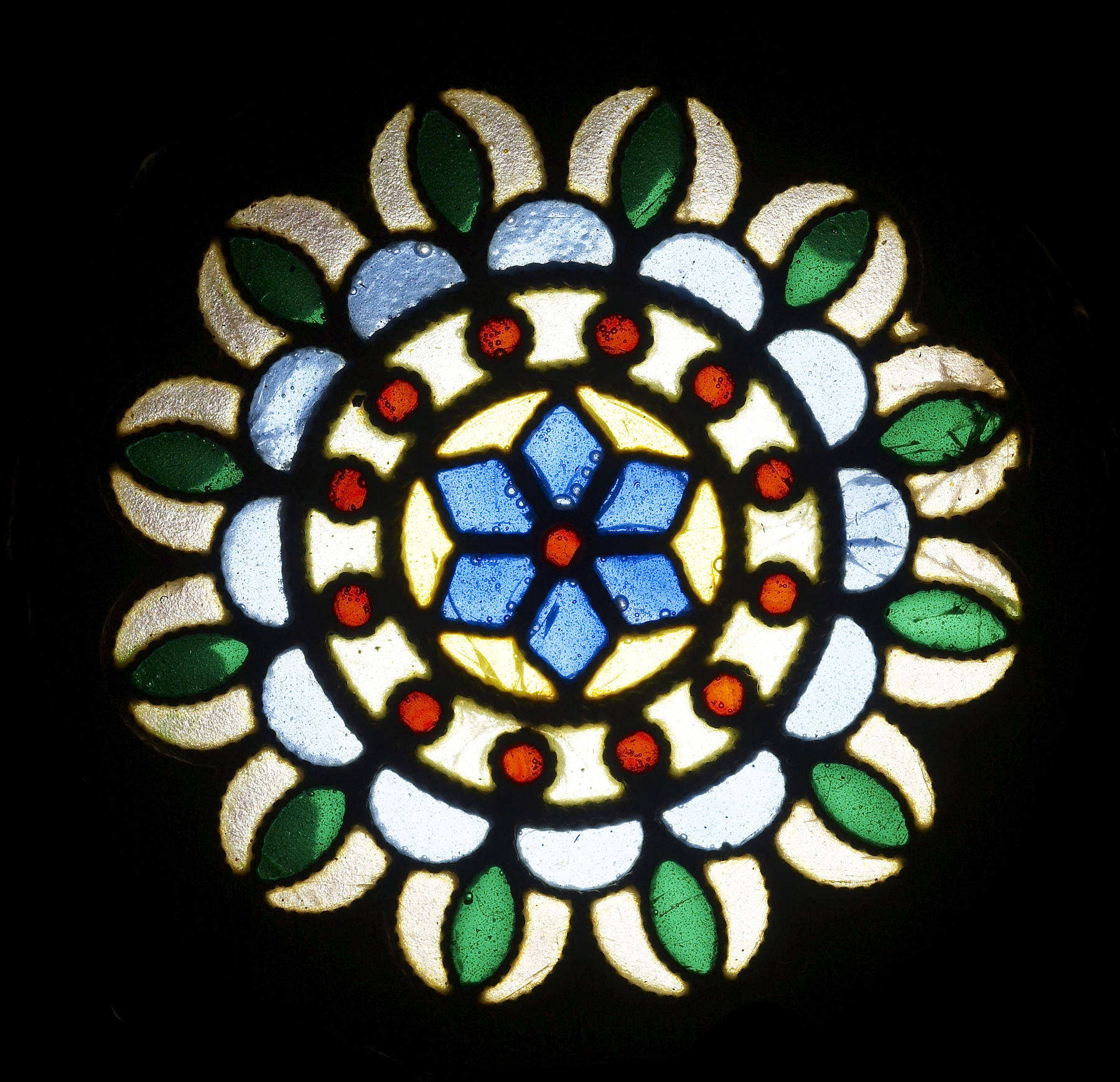Beaker
(18th and 19th Centuries )
The tapered walls of the beaker and its base are in plique-à-jour enamel, whereas the band around its upper edge and the convex foot are executed in raised, painted filigree enamel over a plain silver gilding ground. The upper third of the vessel is devoted to six circles enclosing two designs, one of circles alternating with the other of abstract flowers. The lower two thirds are occupied by six arched panels with alternating designs of schematized plants and abstract floral designs. The bands around the top of the beaker and its bottom are decorated with blossoms with six white petals and red centers alternating with blue, turquoise, and green elements. The plique-à-jour base reveals a blue star-shaped blossom enclosed by a row of red circles, blue lunar shapes, and a band of green leaves on a white ground.
Inscription
Provenance
Provenance (from the French provenir, 'to come from/forth') is the chronology of the ownership, custody, or location of a historical object. Learn more about provenance at the Walters.
Jean M. Riddell, Washington, D.C. [date and mode of acquisition unknown]; Walters Art Museum, 2010, by bequest.
Geographies
Russia, Moscow (Place of Origin)
Measurements
H: 4 15/16 x Diam at rim: 2 13/16 in. (12.6 x 7.1 cm); Diam of base: 2 3/16 in. (5.6 cm)
Credit Line
Bequest of Mrs. Jean M. Riddell, 2010
Location in Museum
Not on view
Accession Number
In libraries, galleries, museums, and archives, an accession number is a unique identifier assigned to each object in the collection.
In libraries, galleries, museums, and archives, an accession number is a unique identifier assigned to each object in the collection.
44.779




